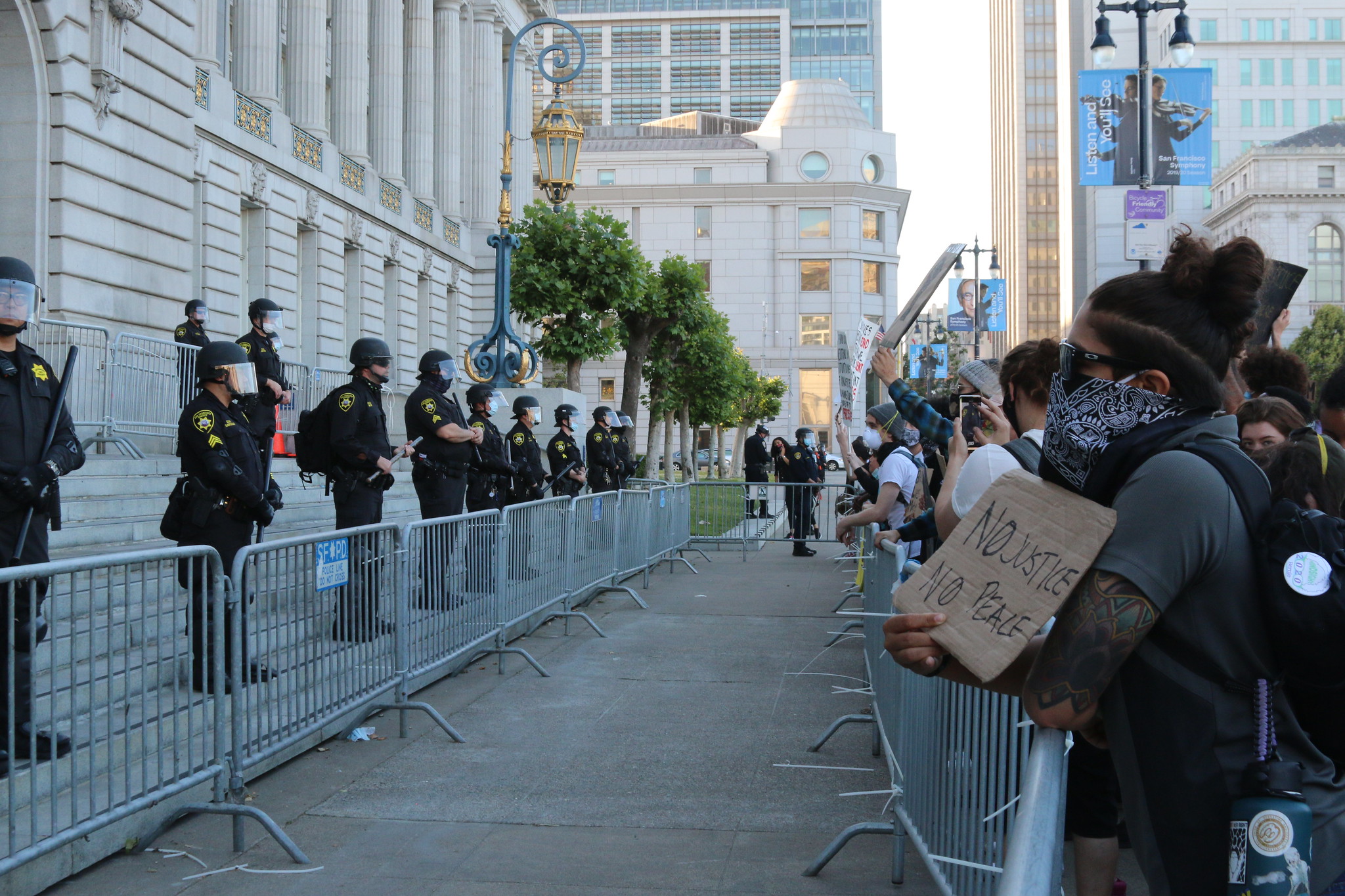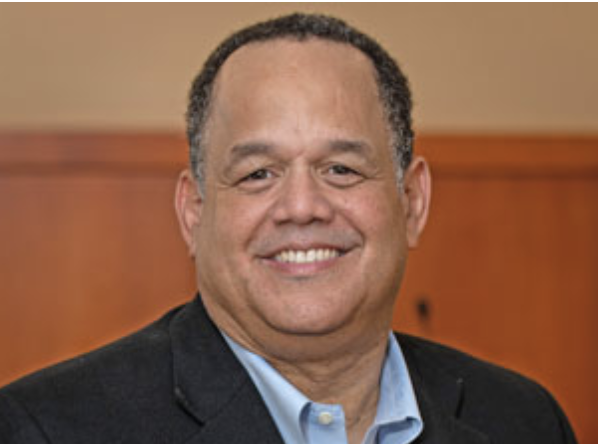Here’s a More Important Reform Than Ending Qualified Immunity
It's time to apply vicarious liability to local governments whose police officers violate the civil rights of residents. The change would be a more important reform for Section 1983 litigation than getting rid of qualified immunity for individual officers.

Published by The Lawfare Institute
in Cooperation With

In the wake of the national protest and activism that followed the killing of George Floyd in Minneapolis on May 25, 2020, the public has paid more and more attention to the avenues available for legal response to police misconduct. Some focus rightly has gone to prosecuting offending officers. But Floyd’s killing also brought increased scrutiny on the barriers that prevent victims of police brutality from securing relief in civil court.
This has led to a new push to end “qualified immunity,” a judge-made traditional defense that allows police officers to avoid monetary liability in response to a civil rights claim if the officers can demonstrate that they acted reasonably under the circumstances and that their actions did not violate a “clearly established” constitutional right of the claimant. This has led to federal, state and local legislation (both enacted and pending) seeking to reform or abolish qualified immunity for police officers. The George Floyd Justice in Policing Act, which passed the House of Representatives on March 3, includes an express removal of qualified immunity in federal civil rights claims filed against police officers. This national focus on the qualified immunity defense is appropriate and welcome; the defense has increasingly resulted in dismissals of Section 1983 claims against police officers, or reversals of trial court judgments in favor of plaintiffs on appeal in recent years.
But the narrow focus on reform of just one feature of federal civil rights litigation misses another, more debilitating doctrinal limitation on civil rights claims: the rule that provides all but complete liability protection for the municipal governments that employ the police officers who engage in misconduct.
Federal civil rights law allows victims access to relief in civil court for violation of their constitutional rights. Specifically, 42 U.S.C. § 1983 provides a private right of action for anyone who is injured as a result of a violation of their federal or constitutional rights by “every person” acting “under color of [state law].” “Section 1983” claims are the most common civil rights causes of action filed in federal courts against police officers and other state and local government officials. Family members of George Floyd filed a Section 1983 action against the four police officers involved in his arrest, the police department and the city of Minneapolis. The lawsuit was settled for $27 million.
Like the Floyd family suit, Section 1983 claims seeking compensation for injuries caused by police officers can be filed against the individual officers and/or the city and county governments that employ them. (Section 1983 claims seeking monetary relief cannot be filed against state governments based on the doctrine of “sovereign immunity.”) But success in such suits is exceptionally difficult in light of the severe requirements for such cases imposed by the Supreme Court in Monell v. Department of Social Services of New York and subsequent cases.
Section 1983 was originally included in the Civil Rights Act of 1871, also known as the Ku Klux Klan Act, passed at the height of “Radical Reconstruction,” as a federal judicial enforcement mechanism for the 14th Amendment. Congress was motivated by evidence that state and local governments were not protecting the rights of Black citizens (both formerly enslaved people and others), particularly in the former Confederate States of America. But, as a result of the immediate highly restrictive judicial interpretations of the statutory language, in cases like the Civil Rights Cases (1883) and the Slaughterhouse Cases (1873), Section 1983 did not give rise to any measurable civil rights litigation for more than 80 years.
That all changed in 1961 with the Supreme Court’s decision in Monroe v. Pape, a case alleging misconduct by Chicago police officers. The plaintiff sued the officers, alleging that they violated his Fourth Amendment rights. But he also sued the City of Chicago in its role as the employer of those officers based on the common tort theory of vicarious liability, which for centuries has been used in Anglo American courts to hold employers liable for harm caused by their employees.
The first issue addressed in Monroe was whether actions by government officials made possible by the authority granted to them by the government (like that granted to police officers to search and enter private homes) could give rise to liability in federal court under Section 1983 because that action met the definition of “under color of state law” in Section 1983 even if the officials’ actions violated applicable state law. Second, the court determined whether the City of Chicago could be held liable under Section 1983 as the employer of the officers because the city met the definition of “person” in the statute. The court answered yes to the first question, holding that Congress had the power to “enforce provisions of the 14th Amendment against those who carry a badge of authority of a State and represent it in some capacity, whether they act in accordance with their authority or misuse it.” This part of the decision opened the door to an exponential increase in civil rights litigation and enforcement in the United States from the early 1960s until today.
But the court rejected the claim against the city, holding that Congress had not intended to include municipal governments in the definition of a “person” subject to liability under the Civil Rights Act.
Seventeen years after Monroe, the Supreme Court took a second swing at the issue of municipal liability under Section 1983 in Monell v. Department of Social Services of the City of New York. The case involved a group of women employees of New York City who alleged they were forced to take medical leave because of their pregnancies. The lower court had denied back pay claims “because any such damages would come ultimately from the City of New York and, therefore, to hold otherwise would be to circumvent the immunity conferred on municipalities by Monroe.” The Supreme Court, in an opinion by Justice William Brennan, overturned the lower court, and expressly overturned Monroe “insofar as it holds that local governments are wholly immune from suit under § 1983.”
The majority rejected the Monroe court’s reliance on the legislative history to support its conclusion that local governments were immune from liability under Section 1983, and concluded that Congress intended Section 1983 to be “broadly construed” and that “Congress understood ‘persons’ to include municipal corporations.” Brennan argued that by the time of the passage of the Civil Rights Act “it was well understood that corporations should be treated as natural persons for virtually all purposes of constitutional and statutory analysis” and that the “usual” meaning of the word “person” included corporations and extended to municipal corporations (the term used for what have evolved into municipal governments like cities and counties).
But, after allowing Section 1983 claims against local governments, Brennan sharply limited the circumstances in which that government could be found liable for monetary damages in such claims. He concluded that Section 1983 exposed local governments to liability only “where, as here, the action that is alleged to be unconstitutional implements or executes a policy statement, ordinance, regulation or decision officially adopted and promulgated by the body’s officers” and that “deprivations visited pursuant to governmental ‘custom’ even though such a custom has not received formal approval through the body’s official decision-making channels.”
While official policy or long-term custom of a local government could provide the basis for civil rights liability, Brennan concluded that the traditional doctrine of vicarious liability did not apply to municipal governments in Section 1983 claims. In other words, local governments would not be liable for damages caused by their employees simply because of the employer-employee relationship, but only if the actions that caused the harm involved implementation of a policy or long-term habitual practice authorized by the government. Brennan argued that allowance of this kind of liability “would have raised all the constitutional problems associated with the obligation [and the application of a positive duty to the local governments] to keep the peace, an obligation Congress chose not to impose because it thought imposition of such an obligation unconstitutional.”
In addition to the constitutional concern, Brennan rejected vicarious liability for local governments based on his broader ambivalence about the doctrine in general, noting that “to this day, there is disagreement about the basis for imposing liability on an employer for the torts of an employee when the sole nexus between the employer and the tort is the fact of the employer-employee relationship.” Brennan identified what he saw as the two most reasonable justifications for the doctrine. One was what he called the “common-sense notion that no matter how blameless an employer appears to be in an individual case, accidents might nonetheless be reduced if employers had to bear the cost of accidents.” The other was that “the cost of accidents should be spread to the community as a whole on an insurance theory.” Brennan concluded that neither of these justifications appeared to motivate Congress to impose a positive requirement on local governments to keep the peace and that the “justification was obviously insufficient to sustain the amendment against perceived constitutional difficulties.”
The preclusion of vicarious liability in Monell has had negative real-world impacts on civil rights litigation arising from police misconduct. Governments have no incentive to address systematic cultures and procedures that habitually result in police misconduct, or to discipline or dismiss officers who commit repeated violations, if their only liability exposure arises from claims against officers that the governments may or may not compensate. In addition, victims of police misconduct are often left with insufficient funds to compensate for their injuries when the only defendant in their lawsuit is an individual police officer.
Supreme Court justices have consistently questioned Brennan’s justification for the rejection of vicarious liability in the more than 40 years since Monell was decided. In 1997, for example, in a dissent in Board of County Commissioners of Bryan County, OK v. Brown, Justice Stephen Breyer expressly called for rejection of the Monell prohibition of vicarious liability for governments, as opposed to “spin[ning] ever finer distinctions as we try to apply Monell’s basic distinction between liability that rests upon policy and liability that is vicarious, suggest[ing] that we should reexamine the legal soundness of that basic distinction.”
Breyer argued that the basic rationale for the preclusion of vicarious liability has been shown to be unsound and that Brennan’s textual approach in Monell was similarly unconvincing: “As a purely linguistic matter, a municipality, which can act only through its employees, might be said to have subjected a person *** to a loss of rights when a municipality’s employee acts within the scope of his or her employment.” He also argued that the preclusion on vicarious liability is not serving the interest that motivated it; the doctrine is complicated and lacks predictability, and many municipalities already indemnify their officials for any liability arising from the performance of their duties while others don’t and still more have more complicated case-by-case determinations.
Regardless of inconsistent policies of local governments for compensating officers found liable in civil rights claims, the lack of municipal liability has supported a reactionary approach to police misconduct where the injuries are addressed after they occur instead of implementing proactive policies that would prevent the harm in the first place. Too many cities have shown a willingness to compensate victims of those few instances of police misconduct that can be overwhelmingly demonstrated as opposed to taking action that will positively reform their police forces. Monell’s restrictions on municipal liability are a major factor motivating this approach.
Today, the doctrine of vicarious liability—consistently applied in our legal system to private employers because of the overwhelming social benefits it produces—effectively cannot be applied to legal claims against public employers. Both of the benefits of the doctrine cited by Brennan—preventing harm before it occurs and spreading the cost of any harm that does arise—would apply with greater (not lesser) force to government as opposed to private employers. It’s difficult to understand why the doctrine can’t be applied to public employers, and Congress should act immediately to amend the language of Section 1983 and other civil rights statutes to remove the restriction.
Vicarious liability would impose a strong incentive on governments to take better care in preparing their employees in advance of sending them out to perform tasks in the government’s name, and to closely monitor the ongoing performance of these tasks to avoid often potentially severe financial consequences. The societal benefits of reduction of “accidents,” as Brennan refers to them, would be particularly substantial in claims involving police officers who are granted powers and responsibilities far beyond those of the private employees whose smallest mistakes give rise to severe financial consequences for their private employers hundreds of times every day in this country. Exposure to vicarious liability would encourage municipalities to take steps that would prevent police misconduct as opposed to compensating police officers required to pay judgments for harm they have already caused.
In addition, there is no entity better situated than a local government to spread the costs required for training and maintaining an effective but benign police force. If the U.S. legal system accepts that plumbers will pass part of the cost of properly training and equipping their employees to consumers as “part of the cost of doing business,” what possible reason could there be for not passing on the costs associated with developing a police force to all of its “customers”—the members of the community that this force will serve?
Qualified immunity reform could expand the liability for individual police officers for their constitutional violations. But if the objective of activists and lawmakers is to address systematic and institutional problems with policing, civil rights actions must focus on the governmental entities that hire, employ, train and supervise the offending officials. Consequently, expanding municipal liability to include vicarious liability for harms caused by police officers, and not removing qualified immunity defenses for those officers, should be the primary focus for reform of Section 1983 litigation.





